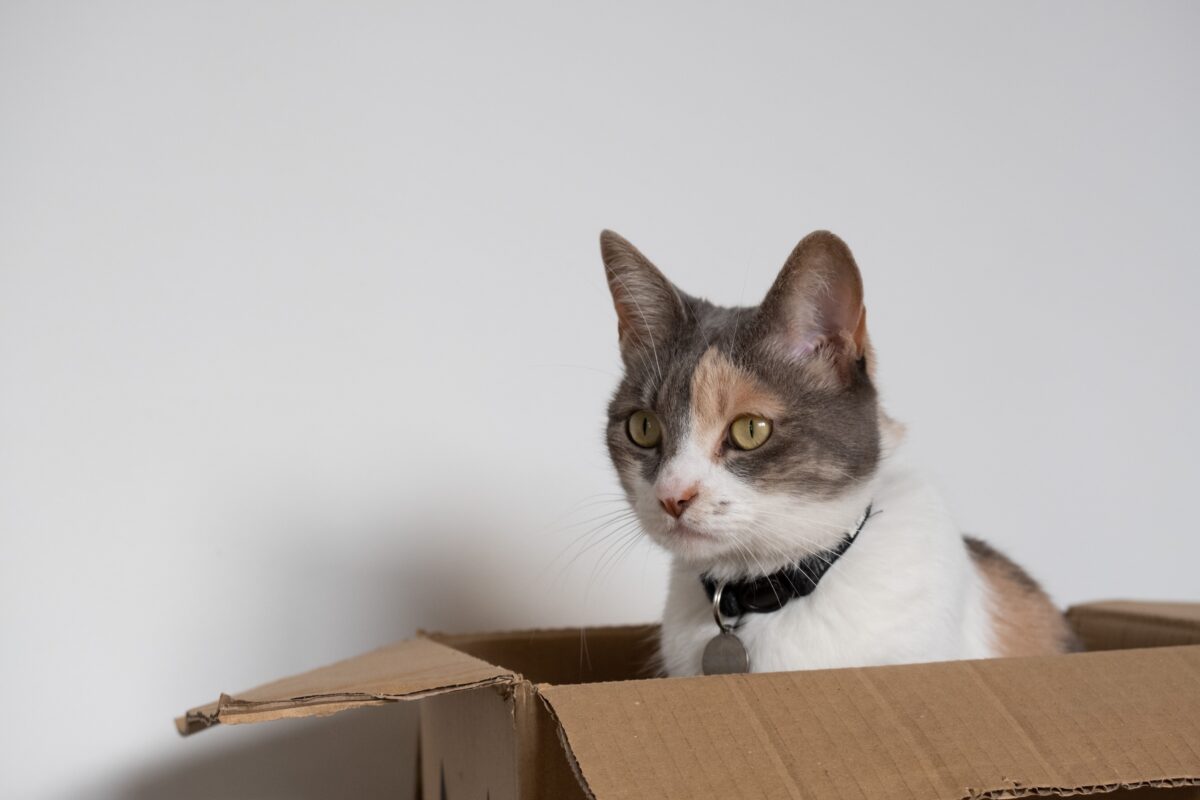
How to Make Your Cat Comfortable in Your New Home
You can take measures to ease your cat’s transition when it comes time to pack up the house and relocate. The aim is to achieve an environment that is comforting. This will assist you in preventing messes, meowing, hostility, and failed escape attempts.
First, prepare before you move.
Make sure the ID collar on your cat is current and secure. It is preferable to microchip your cat in advance of the relocation in case they become frightened in the new location and escape. When microchip information is maintained up to date, reunions are significantly more likely.
Maintain as much of your cat’s routine as normal in the days preceding the transition. Cats may become anxious when unfamiliar people and objects suddenly enter their environment or when their beloved furniture and belongings vanish. Introduce boxes into the house before you begin packing to lessen this stress. This aids in giving your cat a new, familiar environment. Additionally, it lessens the amount of fresh stressors on moving day.
Cat carriers can be one of the most stressful items in a cat’s life. Instead of hiding it away, slowly introduce it into their space. The more time they spend with it, the more relaxed around it they will become. An easy way to transition it into their day-to-day life is putting their favorite blanket and some toys in it. You can also use some of their favorite treats to lure them to it.
Second, make sure the move is as smooth as possible for them.
The majority of cats dislike traveling, so be prepared for your cat to be upset when you get to your new house. Make sure your cat is accustomed to car rides in the carrier if your move involves a lengthy road trip.
When you get there, keep your cat in the carrier while guests come and go from your new residence. Although it may be tempting, avoid opening your carrier in the middle of the trip to comfort your cat. This raises the possibility of your cat making a break for it in an uncharted area.
If your cat is very nervous or you expect your move to be time consuming, it may be wise to board your cat for a few days before and after the move, leaving them at the facility until you are unpacked and have set up your new home. By doing this, they will be kept out of the chaos caused by the transfer. Additionally, you will have the time to assist them with settling in when they return home.
Third, help them transition into their new home.
Prepare a room for your cat. It is a good idea to keep them separated in one area of the house for a few days while they adjust to their new surroundings. Give them a cozy bed (complete with their favorite blanket and toys), a litter box, food and water.
Once your cat’s new space is ready, let it out of the carrier. Sit softly alongside your cat as it explores its new surroundings. Hide little amounts of dry food to entice them to explore their new surroundings. Make a couple more rooms available to them over the next few days so the cat can freely explore them. Make sure they can’t leave the home for at least two weeks after your move so they can properly develop an attachment to their new territory.
Fourth, help ensure they are comfortable in their new home.
During the first few days and weeks in your new house, pay extra attention to your cat. If your cat is showing signs of discomfort, there is nothing wrong with bringing them back to their home base for a day or two; just be sure to bring their food and water with them.
If your cat seems to be adjusting well and is acting like their normal self, then you should be set! You can now choose where their litter box will live permanently. Just be sure to point out the new location to them so they can find it again.
Here are some stressors to look out for:
Excessive vocalization
Excessive scratching
Excessive grooming
Hiding
Panting or drooling
Runny eyes or runny nose
Diarrhea
Lack of appetite
Lethargy
Lack of bladder control
Spraying
Aggression
Use Houdi’s Foodies treats to help reward your furry friend before, during, and after a stressful move. Not only are they made with only whole, raw ingredients, but your cat is sure to love the taste.
